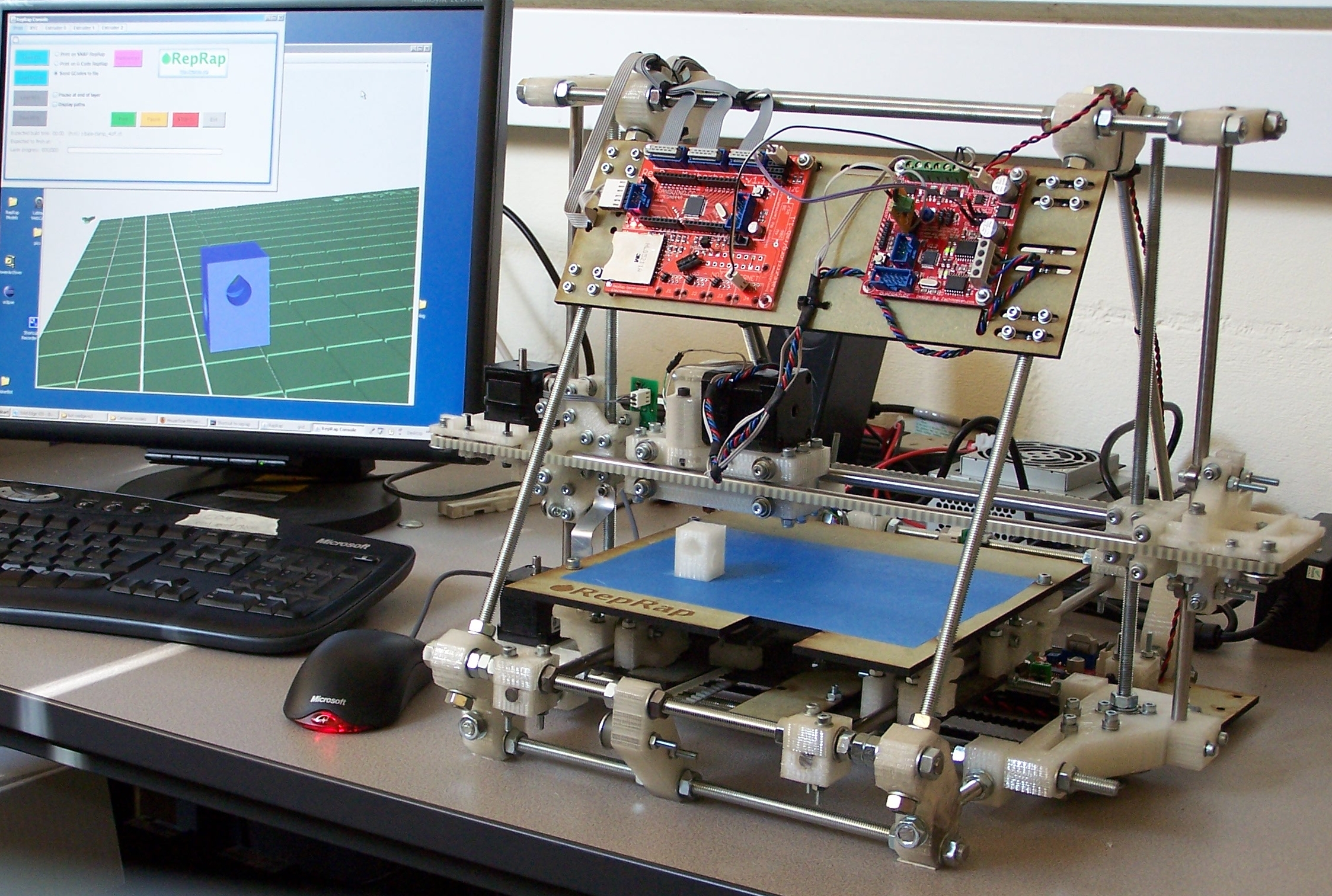Interest in open-source hardware (OSHW) has exploded beyond its early hobbyist adopters. Favoring design transparency over confidentiality, the OSHW movement lies at the core of some of the hottest trends in the electronics industry and powers some of its most innovative products.
Open-source hardware is pervasive – providing the backbone for the largest social networking site and one of the world's largest research facilities. It dives underwater, flies overhead, and even orbits the planet. Yet, perhaps its most telling success is in sparking the nascent 3D printer industry.

Figure. Open source hardware defines the 3D printer movement with self-replicating 3D printers and popular OSHW system boards such as Arduino.
Source: RepRap.org
Most consumer-level 3D printers priced below $1,000 are based on OSHW specifications from the RepRap Project, which arguably sets the bar for openness in both mechanical and electronics design: A 3D printer can print the mechanical components needed to build another; and the OSHW Arduino or more powerful Sanguino can provide its core electronics.
While OSHW projects such as RepRep create entirely new industries, others arise from a concern that some types of products are too important to rely on proprietary solutions. For example, the open-source hardware Generic Infusion Pump (GIP) project defines a set of generic infusion pump safety models and reference specifications through a collaboration of the U.S. Food & Drug Administration (FDA) and universities. Another OSHW effort offers an electrocardiograph (ECG) device certified to European and U.S. (AAMI EC 11) ECG standards and available as a reference design or completed product from Gamma Cardio Soft.
An open approach also benefits security applications where transparency and full disclosure ally concerns about security faults. For example, the Crypto Stick provides an open-source hardware solution to the problem of securely storing secret keys used in secure access schemes. Unlike vulnerable software approaches, the Crypto Stick uses an integrated OpenPGP smart card to store keys.
Although OSHW efforts typically crystallize around a group of volunteers, other major projects arise from market-leading companies looking for improved solutions. For example, Facebook created the Open Compute Project to focus collaborative efforts on creating more cost-effective servers and data centers. Similarly, the European research collaborative CERN defined specifications for key hardware elements – and even created a legal framework for OSHW knowledge exchange with its Open Hardware Licence (OHL). The CERN White Rabbit Project defined an enhanced Ethernet and serves as the basis of commercial products such as Seven Solutions FPGA Mezzanine Card (FMC) four-lane PCIe card, and the Simple PCIe FMC Carrier (SPEC).
Open-source hardware isn't just moving the industry in new directions, it's moving through the air, sea and space. 3D Robotics sells open-source unmanned aerial vehicles (UAVs), while OpenRov offers an open-source autonomous underwater vehicle (AUV). Perhaps the most stunning application of open-source hardware is its use in miniature spacecraft in the CubeSat Project and its OSHW specifications. Participants include universities as well as traditional mil/aero hardware heavyweights such as Boeing, the Aerospace Corporation, and NASA itself.
As with open-source software, open-source hardware is gaining an edge on proprietary products in many arenas. While open-source hardware might not be suitable for every application segment, its principles of verifiability, modularity, and test coverage will certainly inform an increasingly larger segment of hardware designs.
By Stephen Evanczuk
Advertisement
Learn more about Mouser Electronics





